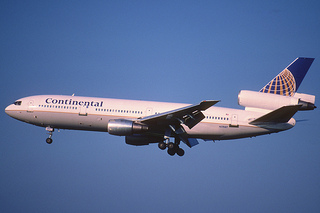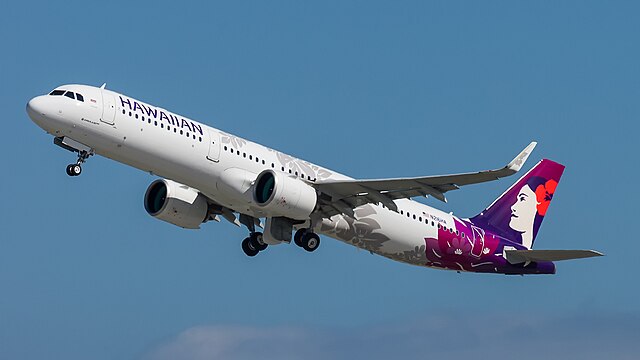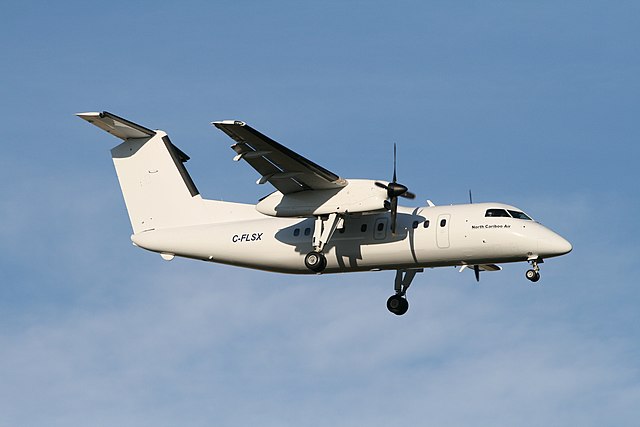Kelowna B722 at Hamilton on Mar 19th 2013, rejected takeoff, cleared for takeoff despite snow ploughs on runway
Last Update: January 12, 2015 / 15:30:59 GMT/Zulu time
Incident Facts
Date of incident
Mar 19, 2013
Classification
Incident
Cause
Rejected takeoff
Airline
Kelowna Flightcraft
Departure
Hamilton, Canada
Destination
Winnipeg, Canada
Aircraft Registration
C-GKFJ
Aircraft Type
Boeing 727-200
ICAO Type Designator
B722
The Canadian TSB reported that at the time of the takeoff clearance two snow ploughs were travelling from the end of the runway towards the threshold. The aircraft had already reached high speed when tower instructed the aircraft to abort takeoff and the aircraft came to a stop at about the midpoint of the 10,000 feet long runway. The TSB is currently assessing whether to open an investigation.
Nav Canada reported KFA-273 was delayed by 5 minutes as result.
On Jan 12th 2015 Canada's TSB released their final report releasing following findings:
Findings as to causes and contributing factors
- The blocked-runway indicator on the controller’s extended computer display system display went unnoticed or unheeded, resulting in a take-off clearance being issued to KFA273 when the runway was not clear of vehicles.
- During issuance of the take-off clearance, vehicles were observed on the runway, and the controller instructed the aircraft to stand by rather than using standard phraseology to cancel the take-off clearance.
- The flight crew began to read back the take-off clearance before the controller released the push-to-talk button and, in doing so, did not hear the controller’s instruction to stand by.
- The controller’s attention was focused on other tasks when KFA273 began the take-off roll, resulting in the aircraft movement going unnoticed for 22 seconds before the instruction to abort take-off was issued.
- The air traffic control instruction to abort take-off, which was simultaneous with other sensory input and was not sufficiently compelling to alter the crew’s mental model of the situation or their expectation of an uneventful take-off, initially went unnoticed. As a result, the rejected take-off was not initiated until 9 seconds after the instruction.
Findings as to risk
- If personnel scheduling practices include counter-clockwise shift rotations and short shift changes, there is an increased risk of fatigue and performance impairments during night shifts occurring at the end of the shift rotation.
- If the practice of working the combined air–ground position is employed for extended periods of time at night, there is an increased risk of controller errors due to fatigue.
- If a blocked-runway indicator is routinely unheeded, there is an increased risk of aircraft being authorized to use a runway that is unavailable.
- If airlines systematically plan flights with similar call signs to operate in close proximity to one another, there is an increased risk of call sign confusion.
- If air traffic control transmissions are incomplete, not heard, or insufficiently compelling to alter the crew’s preconceived perception of the situation, then the risk is increased that the transmission will go unheeded.
- If aircraft depart before the advisory times in the brake-cooling schedule, then there is an increased risk of brake overheating or tire fuse plug release.
The TSB described the sequence of events:"The flight crew received take-off clearance while backtracking on Runway 30. Once the controller uttered the phrase “cleared for take-off Runway 30”, the PNF immediately pressed the PTT and read back the clearance, ending the transmission with “273”. The remainder of the controller’s transmission, which included the pause and instruction to stand by, was not heard by the flight crew. The simultaneous activation of the PTT in the cockpit will override any incoming transmissions. In a recording of the subsequent similar take-off clearance, the PNF responded by stating “from the threshold cleared take-off 30, Flightcraft 273”. The aircraft began its take-off roll at 0207:47. As the aircraft accelerated through 80 knots at 0208:09, the PNF made the standard call of “80 knots”, and the PF responded “80 knots”. At the same time, an approach chart clipped to the PF’s control column fell off the clip, and both the PF and PNF were momentarily distracted. Also at this same time, the controller issued the instruction to abort take-off. At this point, KFA273 was approximately 1130 feet down the runway. The instruction to abort take-off went unrecognized for approximately 9 seconds. At 02:08:18 and approximately 2750 feet down the runway at an airspeed of 122 knots, the PNF of KFA273 saw bright white lights at the far end of the runway. Recognizing that the call to abort take-off was for them, the PNF informed the PF, and the crew initiated a rejected take-off (RTO). The airspeed peaked at approximately 130 knots before deceleration began. Initially during the RTO, the PF applied maximum braking; however, once it was apparent that the aircraft would stop well short of the snow sweepers, brake pressure was reduced to light braking. The aircraft was brought to a stop approximately 1700 feet following initiation of the RTO, at a position 4800 feet from the threshold and approximately 1200 feet short of the snow sweepers."
The TSB reported the captain (approx. 6000 hours total, approx 3000 hours on type) was pilot flying and was assisted by the first officer (approx 2200 hours total, 800 hours on type) and a second officer (2250 hours total), crew fatigue was not considered a factor as all had been off work for a minimum of 2 days prior to the occurrence and reported on duty about 1.5 hours prior to the occurrence. Neither of the crew members had experienced a rejected takeoff except on simulators prior to the occurrence.
The controller on duty at the occurrence had completed his day shift at 13:45L and returned to the midnight shift at 23:47L. The TSB stated: "Assuming a 45-minute commute each way to work, plus time for meals, personal hygiene, and any family and social responsibilities, the controller does not have an 8-hour opportunity for sleep between these 2 shifts. This shift pattern was observed 6 times during the 70 days preceding the occurrence." The TSB stated further:
Based on known fatigue risk factors and the predicted sleep, the quantitative analysis showed low predicted effectiveness occurred during a large proportion of the night shifts. The following risk factors were noted:
- Obtaining less than 8 hours of sleep in the previous 24 hours (sleep loss)
- Accumulation of a sleep debt greater than 8 hours (sleep loss)
- Time of day (circadian rhythm trough) and being out of phase (circadian rhythm de-synchronization).
A qualitative analysis of the pattern of work/rest during this period identified the same risk factors and likely impact on performance.
For the first 2:00 hours of his shift, prior to the occurrence, the workload had been light, in the 20 minutes prior to the occurrence the workload became higher with 4 departures requiring increased attention due to runway changes and clearance amendments due to weather. A second controller was available on recall, however, the controller did not assess the workload as high enough to call his collegue out. The TSB stated: "Both excessive workload and low levels of workload can result in decrements to controller performance. Overload can result in excessive demand on working memory and decrements in situational awareness, due to an inability to attend to all of the relevant information in the operating environment. This inability can lead to task shedding. Low levels of workload can produce similar effects by different means, since low levels of stimulation will result in vigilance decrements, which reduce the amount of attention to the operating environment. The importance of considering periods of low task demands has been described as follows: “In many environments, it is the low levels of workload that, when coupled with boredom, fatigue, or sleep loss, can have negative implications for human performance.”"
The TSB analysed: "While viewing the extended computer display system (EXCDS) display, which needed to be manipulated during the validation request, the blocked-runway indicators located directly below the aircraft’s strip went unnoticed. The controller caught the call sign error while beginning a transmission to KFA273, informed the aircraft to stand by, and then corrected the error with the area control centre (ACC). The controller then issued a take-off clearance to KFA273. In doing so, and possibly distracted by the need to make the previous correction, the controller again did not detect the blocked-runway indicator while preforming the routine scan. Similarly, the practice of authorizing aircraft to arrive or depart on a runway for which a blocked-runway indicator is showing indicates a desensitization of the controller to the importance of the blocked-runway indicator, eliminating its effectiveness as a defence and increasing the risk of aircraft being authorized to use a runway that is unavailable. As the controller was completing the clearance, a visual scan of the runway surface detected the vehicles, and the controller paused and informed the aircraft to stand by. The Air Traffic Control Manual of Operations (ATC MANOPS) phraseology was not used to cancel the take-off clearance. It could not be determined whether using correct phraseology would have altered the outcome. The controller paused after the words “cleared take-off Runway 30” were spoken. After this brief pause and without releasing the push-to-talk button (PTT), the controller then stated “actually standby” rather than the required phraseology (“Take-off clearance cancelled”). During the pause, the pilot not flying (PNF) on KFA273 assumed that the transmission was complete, depressed the aircraft’s PTT and read back the clearance. When the controller eventually released the tower PTT, only the tail end of this transmission, which included the aircraft’s call sign, was heard. As call signs alone are often used to acknowledge receipt of a transmission, the controller assumed that the aircraft understood the instruction to stand by and did not expect it to take off."
The TSB analysed further:
The flight crew, having not heard the portion of the transmission informing them to stand by, assumed that everything was normal, and began their take-off procedure.
The controller then instructed the vehicles to exit the runway, briefly glanced at KFA273 to confirm that the aircraft wasn’t rolling, and then focused on the Purolator Apron to issue taxi instructions to another Flightcraft aircraft. During this time, KFA273 began the take-off roll outside of the direct field of view of the controller. Immediately after the controller finished the taxi instructions, attention was returned to Runway 30, and the movement of KFA273 was noticed. The controller immediately instructed KFA273 to abort take-off.
At the time of the instruction to abort take-off, KFA273 had just reached 80 knots. The PNF announced the speed, and the pilot flying (PF) confirmed. At the same time, a chart on the PF’s pedestal fell and briefly distracted the crew. Apart from the brief distraction, the crew considered the take-off to be proceeding normally, as expected, and their forward view of the runway ahead presented no indication otherwise.
That which is expected is a central factor that drives attention behavior and, as a result, cues that indicate that the situation is not as expected may not attract attention away from anticipated tasks. The implication is that situations will appear normal or familiar unless that which is “out of the ordinary” is of sufficient magnitude to attract attention and subsequent analysis.
The cockpit environment was relatively noisy. The abort call was simultaneous with other sensory input, unexpected due to its rarity, and without supporting cues such as visual sighting of the obstacle. As a result, it was not sufficiently compelling to alter the crew’s mental model of the situation, or of their expectation of an uneventful take-off, and initially went unnoticed.
As the aircraft began to crest the middle section of the runway, the crew began to notice unusual lights, and the PNF then recognized that the abort take-off call, issued 9 seconds earlier, had been intended for them. The crew rejected the take-off and brought the aircraft to a stop at a safe distance from the vehicles.
Although the crew did consider the increased brake temperature following the rejected take-off (RTO), the brake-cooling schedule was not consulted and, as a result, the aircraft departed with an increased risk of brake overheating or tire fuse plug release.
Metars:
CYHM 190800Z 22017G22KT 8SM -SHRA OVC009 01/00 A2960 RMK SC8 SLP031
CYHM 190700Z 22017KT 5SM -SHRA BR OVC008 01/01 A2959 RMK SC8 SLP029
CYHM 190600Z 22018KT 5SM -SHRA BR FEW004 BKN009 OVC018 01/01 A2959 RMK SF2SC5SC1 SLP027
CYHM 190500Z 20018G23KT 5SM -SHRA BR OVC003 01/01 A2958 RMK SF8 SLP026
CYHM 190400Z 15007KT 4SM -SHRASN BR OVC004 00/00 A2960 RMK SF8 SLP034
CYHM 190300Z 11006KT 2 1/2SM -SHRASN BR OVC004 00/M00 A2962 RMK ST8 SLP042
CYHM 190231Z 10008KT 2 1/2SM -FZRA -SHSN BR OVC004 M00/M01 A2963 RMK SF8 SLP044
CYHM 190200Z 10010KT 5SM -FZRA -SHSN OVC005 M00/M01 A2965 RMK SC8 SF ASOCTD SLP049
Incident Facts
Date of incident
Mar 19, 2013
Classification
Incident
Cause
Rejected takeoff
Airline
Kelowna Flightcraft
Departure
Hamilton, Canada
Destination
Winnipeg, Canada
Aircraft Registration
C-GKFJ
Aircraft Type
Boeing 727-200
ICAO Type Designator
B722
This article is published under license from Avherald.com. © of text by Avherald.com.
Article source
You can read 1 more free article without a subscription.
Subscribe now and continue reading without any limits!
Read unlimited articles and receive our daily update briefing. Gain better insights into what is happening in commercial aviation safety.
Send tip
Support AeroInside by sending a small tip amount.
Related articles
Kelowna B722 near Calgary on Sep 30th 2013, failed engine restarted in flight
A Kelowna Flightcraft Boeing 727-200, registration C-GKFJ performing freight flight KFA-274 from Vancouver,BC to Calgary,AB (Canada) with 3 crew, was…
Kelowna DC10 near Gander on Nov 22nd 2015, electrical problem
A Kelowna Flightcraft McDonnel Douglas DC-10-30 freighter, registration C-GKFD performing flight KFA-206 from Moncton,NB (Canada) to Brussels…
Kelowna B722 at Hamilton on Dec 23rd 2014, hydraulic leak
A Kelowna Flightcraft Boeing 727-200, registration C-GXKF performing freight flight KFA-275 from Hamilton,ON to Winnipeg,MB (Canada) with 3 crew, was…
Kelowna DC10 near Vancouver on Dec 5th 2014, engine shut down in flight
A Kelowna Flightcraft McDonnel Douglas DC-10 freighter, registration C-GKFD performing flight KFA-309 from Calgary,AB to Vancouver,BC (Canada) with 4…
Kelowna DC10 near Swift Current on Mar 17th 2014, engine shut down in flight
A Kelowna Flightcraft McDonnell Douglas DC-10, registration C-GKFB performing flight KFA-309 from Winnipeg,MB to Calgary,AB (Canada) with 3 crew, was…
Newest articles
Hawaiian A21N and private C172 at Long Beach on Oct 26th 2023, near midair collision
A Hawaiian Airlines Airbus A321-200N, registration N216HA performing flight HA-70 from Honolulu,HI to Long Beach,CA (USA), was cleared to land on…
Creebec DH8A at Val d'Or on Oct 26th 2023, near collision with terrain
An Air Creebec de Havilland Dash 8-100, registration C-FLSX performing flight YN-238 from Chisasibi,QC to Val d'Or,QC (Canada) with 28 passengers and…
Subscribe today
Are you researching aviation incidents? Get access to AeroInside Insights, unlimited read access and receive the daily newsletter.
Pick your plan and subscribePartner

ELITE Simulation Solutions is a leading global provider of Flight Simulation Training Devices, IFR training software as well as flight controls and related services. Find out more.
SafetyScan Pro provides streamlined access to thousands of aviation accident reports. Tailored for your safety management efforts. Book your demo today
AeroInside Blog
Popular aircraft
Airbus A320Boeing 737-800
Boeing 737-800 MAX
Popular airlines
American AirlinesUnited
Delta
Air Canada
Lufthansa
British Airways



